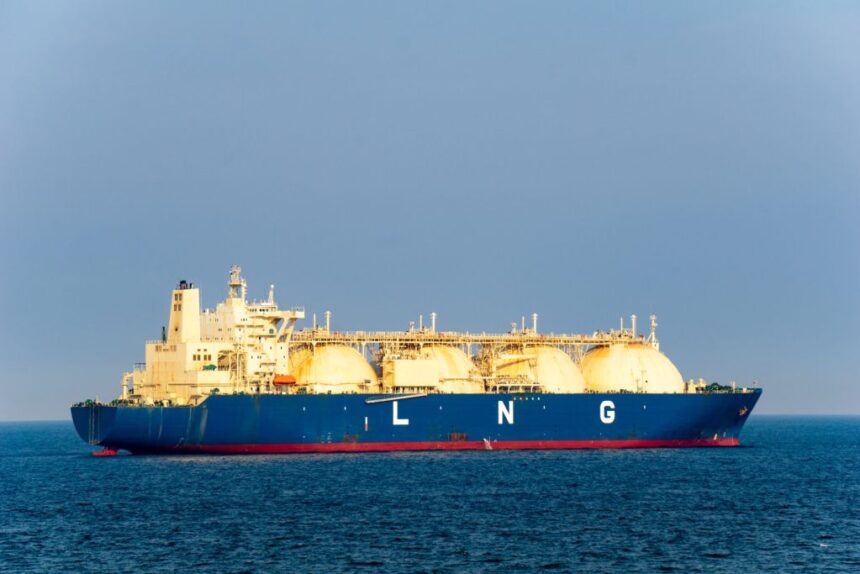Less than two months after receiving approvals from the provincial and federal government, Prime Minister Mark Carney has referred the Ksi Lisims liquefied natural gas (LNG) export facility to the Major Projects Office for review. “Ksi Lisims will become Canada’s second-largest LNG facility with the capacity to export 12 million tonnes of LNG per year to new markets in Asia,” Carney said on Thursday, adding that the project is expected to yield $4 billion per year in gross domestic product.The North Coast transmission line was also on the latest list of projects picked for the Major Projects Office to review. Carney also announced BC Hydro will get a $139.5-million loan from the Canada Infrastructure Bank to support initial work on the transmission line. The Major Projects Office was created to oversee the Liberal government’s effort to speed up approvals for major infrastructure projects deemed to be of national interest. In September, Carney’s government referred an initial list of candidate projects — including Phase two of the LNG Canada export terminal and the Red Chris Mine expansion in northern B.C. — to the office for consideration. Ksi Lisims LNG is a joint venture involving the Nisg̱a’a Lisims Government, U.S.-based LNG project developer Western LNG and Canadian natural gas consortium Rockies LNG. While the B.C. and Canadian governments have emphasized the Nisg̱a’a Lisims Government’s stake in the Ksi Lisims project, documents filed with the B.C. government show the primary owner and operator of Ksi Lisims is Texas-based Western LNG. Employees of Western LNG, which has offices in Houston, Texas and Vancouver, met with senior provincial government officials 69 times since the beginning of 2024, according to B.C. lobbying records. Both Ksi Lisims and the Prince Rupert Gas Transmission pipeline — which will supply fracked gas to Ksi Lisims and LNG Canada, a larger export terminal in Kitimat, B.C. — are backed by Blackstone Inc., a U.S. investment company. In March 2024, the Nisg̱a’a Nation and Western LNG announced a deal to buy TC Energy’s proposed Prince Rupert gas pipeline project. The project has also finalized two agreements to sell its product. The agreements commit Shell Canada and TotalEnergies to buying two million tonnes of LNG per year from the plant — totalling roughly one-third of Ksi Lisims’ expected annual production. The 800-kilometre Prince Rupert Gas Transmission pipeline (PRGT) will cross more than 1,000 creeks, streams and rivers, before terminating at the floating Ksi Lisims LNG facility near the Nisg̱a’a village of Gingolx. Photo: Marty Clemens / The Narwhal Four of the eleven projects referred to the Major Projects Office are in B.C., a fact Premier David Eby highlighted at his own press conference on Thursday.“British Columbia is going to be the economic engine of this new economy that we’re building going forward, and it is great to see some recognition from Ottawa that this is going to be the case,” he said. The Nisg̱a’a Nation is backing Ksi Lisims but other First Nations oppose it Nisg̱a’a Lisims Government president Eva Clayton has described Ksi Lisims as an economic opportunity that will benefit the nation and the world. “Ksi Lisims LNG represents a transformational opportunity for all participating B.C. nations, and it will be developed in line with our nation’s high environmental standards,” Clayton said in a statement emailed to The Narwhal following the approval of Ksi Lisims. But other First Nations oppose the project. The Lax Kw’alaams Band, for example, is southwest of the newly approved LNG facility and tankers filled with the liquefied gas will pass by the village’s coast regularly. Lax Kw’alaams says the LNG facility would negatively affect its traditional territory and has expressed concerns about the project’s potential impact on B.C.’s ability to meet its climate targets. In September, B.C.’s environmental assessment office concluded dispute resolution processes initiated by Lax Kw’alaams and the Metlakatla First Nation as part of Ksi Lisims’ environmental assessment. The resolution failed to address the First Nations’ concerns about the project’s potential impacts on their communities, according to the environmental assessment office. In October 2024, the Gitanyow Hereditary Chiefs, whose traditional territory includes parts of the Nass and Skeena watersheds, filed an application for judicial review with the provincial court. The Hereditary Chiefs alleged the environmental assessment office failed in its duty to consult and to adequately protect fish species was rejected by the court in early September.Simogyet Watakhayetsxw (Hereditary Chief) Deborah Good said Ksi Lisims could destroy habitat essential to local salmon populations. “We’ve had to go to court to fight for our way of life and especially the continuing health of our salmon stocks,” Good said in a statement. “We won’t give up because for us, this is a fight for our way of life — for the salmon that have sustained our economy, culture, people and way of life since time immemorial.”In October, Lax Kw’alaams and the Metlakatla First Nation each filed requests for judicial review with the Federal Court, alleging the minister of environment and climate change ignored their concerns about the adverse impacts of the massive LNG project.Eby said he expects the Major Projects Office will help the province work toward resolving the “complexity” created by projects that span multiple First Nations’ territories and often involve issues of federal jurisdiction.“That’s very helpful to us to resolve long-standing issues, to win support for the project or to help do things faster,” he said. Ksi Lisims may eventually connect to B.C.’s grid, but first it will run on gas Ksi Lisims is located near the Nass estuary at the north end of Pearse Island, an area that is home to salmon, oolichan and many other fish, as well as shellfish and mammal species important to local First Nations. The floating facility would be capable of producing up to 12 million tonnes of LNG annually. Like the second phase of the LNG Canada facility, which was among the first crop of projects earmarked for potential federal fast-tracking in September, Ksi Lisims has been approved by the provincial and federal governments. But it has yet to receive a final investment decision — the definitive commitment to investing in and proceeding with a project — from its backers. Carney said the Major Projects Office will offer support on financing and “help coordinate timely approvals” of the main aspects of the Ksi Lisims project. That includes the pipeline to supply Ksi Lisims with fracked gas, a new electricity transmission line and the floating LNG export facility, as well as “related transmission infrastructure” — namely, the North Coast transmission line.Ksi Lisims will be “one of the world’s cleanest LNG operations,” according to Carney, who said the facility has “the potential to reach net zero by 2030.” To achieve that goal, Ksi Lisims will need to access clean electricity via the North Coast transmission line. Premier David Eby and Energy Minister Adrian Dix are increasingly championing LNG as one of the keys to B.C.’s economic prosperity. Photo: Province of British Columbia / Flickr But the transmission line — which the government has exempted from environmental assessment and plans to block the B.C. Utilities Commission from reviewing — isn’t expected to be operational until 2032, while Ksi Lisims hopes to begin operations in 2028. That would have left the facility out of compliance with a 2023 provincial regulation requiring all LNG facilities to be net zero by 2030. However, B.C. Energy Minister Adrian Dix issued “a clarification” of the 2023 net-zero policy in March, advising the environmental assessment agency that new LNG facilities need to be ready to become net zero by 2030 but can use natural gas if clean electricity is not available “due to circumstances beyond the control of the proponent.” The provincial approval allows Ksi Lisims to use natural gas-fired barges to power its operations until access to BC Hydro’s grid is available. A 2024 briefing note prepared for Eby shows Ksi Lisims requested 600 megawatts from BC Hydro, making it one of the most energy-intensive projects the province has ever seen. With files from Matt Simmons Recent Posts Fast-track or fake-track? Sorting hype from reality in Carney’s major projects blitz Canada’s list of nation-building projects just got longer — but the federal fast-track isn’t everything… Ksi Lisims LNG is on Carney’s nation-building list. Here’s what you need to know Nov. 13, 2025 6 min. read Prime Minister Mark Carney’s support for the floating Ksi Lisims facility, backed by the Nisga’a… Pipelines in Canada, explained Nov. 13, 2025 1 min. read Why are we hearing about building more pipelines? Do they make sense for Canada’s economy?…
Ksi Lisims LNG is on Carneys nation-building list. Heres what you need to know











